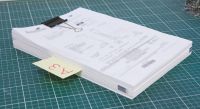Document Preparation Guide
Almost any document being readied for scanning will need to be prepared in some way. This page is designed to outline the steps typically necessary and explain their importance.
Metal objects such as staples and pins can scratch the glass of the scanner causing permanent streaks in subsequent scans which may require the replacement of the glass.
Remove staples, clips, pins, tape.
Documents must be entirely separate from one-another prior to scanning. All document scanners have a glass interface between the document and the scanning array. This glass (either flatbed platen or narrow window in a document transporting scanner) is vulnerable to damage from staples etc. Scanners with document feeders move paper at high speeds, so any document which mis-feeds or jams will be damaged – either torn, crumpled or marks left from skidding feed rollers.
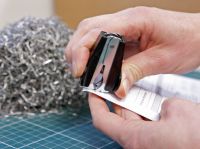
Insert separator sheet (in good condition)
Often, scanning software uses specially marked sheets to separate documents. These are inserted wherever you need a new PDF to start – either a new file or a new document.
Download a PDF separator sheet (PDF 6KB)
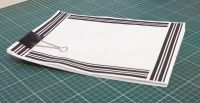
Reposition and secure documents with information overlapped
Post-it notes (or other papers like receipts) should be (re)positioned so that they do not obscure information on the page. Loose items attached to documents can cause jams which in turn may damage the documents. Post-it notes need to be secured with extra tape to ensure they do not detach during document transport.
Check documents for sequence/completeness & taking steps as required
Some documents may be out of sequence or have pages missing – best to check and correct before scanning
Align documents on top or side edge and secure with fold-back clip
Aligning the pages to the top or side edge will help the document feeding mechanism to pick up one document at a time – which will help avoid multi-feeding or jamming
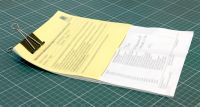
Stabilize fragile, damaged (or undersized) documents using tape or other means
Document feeding mechanisms can be destructive of documents of they are damaged. Taping or trimming will help prevent this (photocopying may also be an option – if the document is in extremely poor condition). Extremely small documents like business cards, compliments slips or receipts can be taped to either front or back of related document (ensuring no information is obscured)
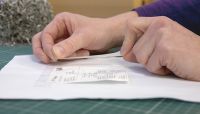
Flag any documents to be unfolded prior to scanning (ie. A3)
Occasional larger documents can be folded to facilitate stacking and transportation, but a flag like a post-it note should be attached, so the scanner operator can unfold the document prior to scanning
